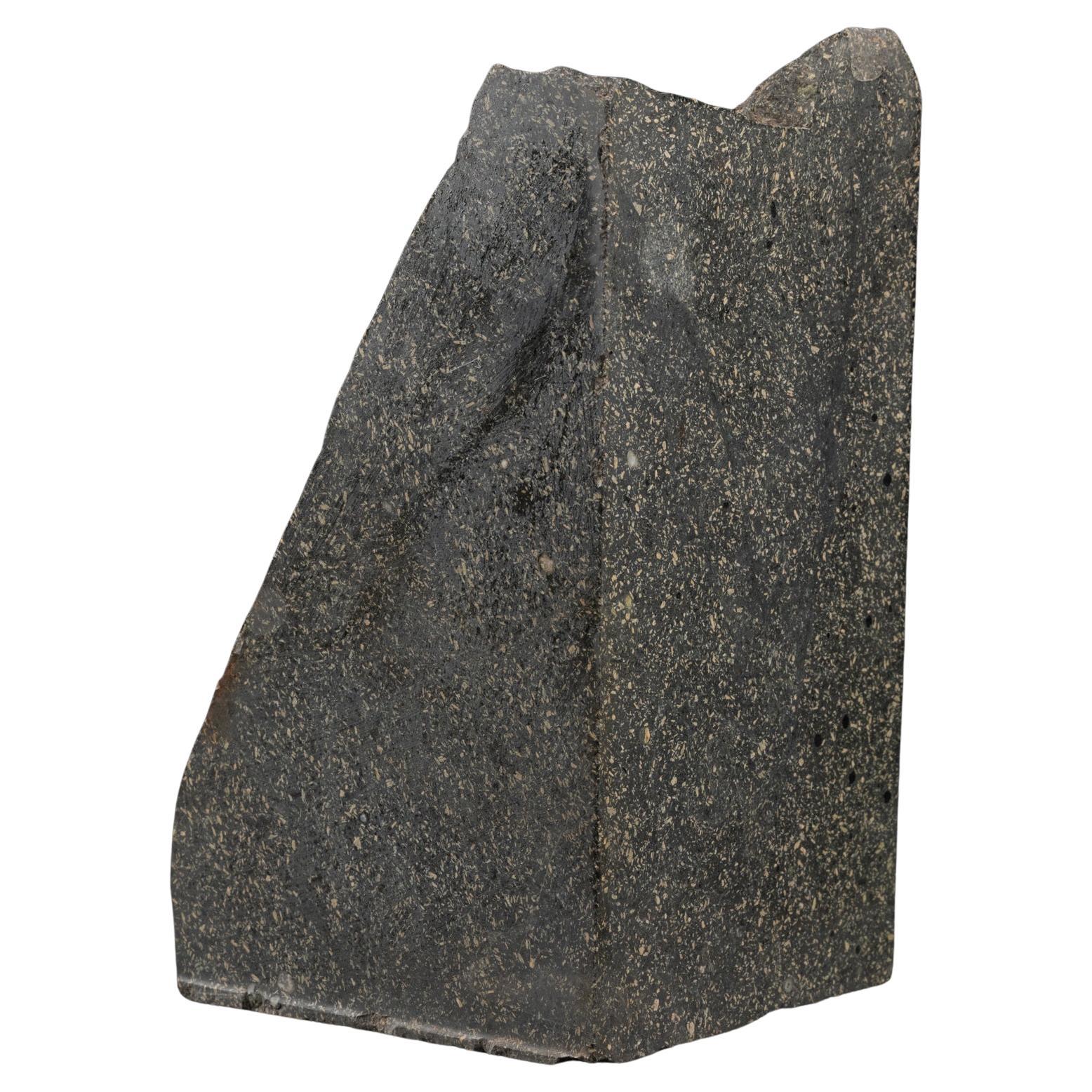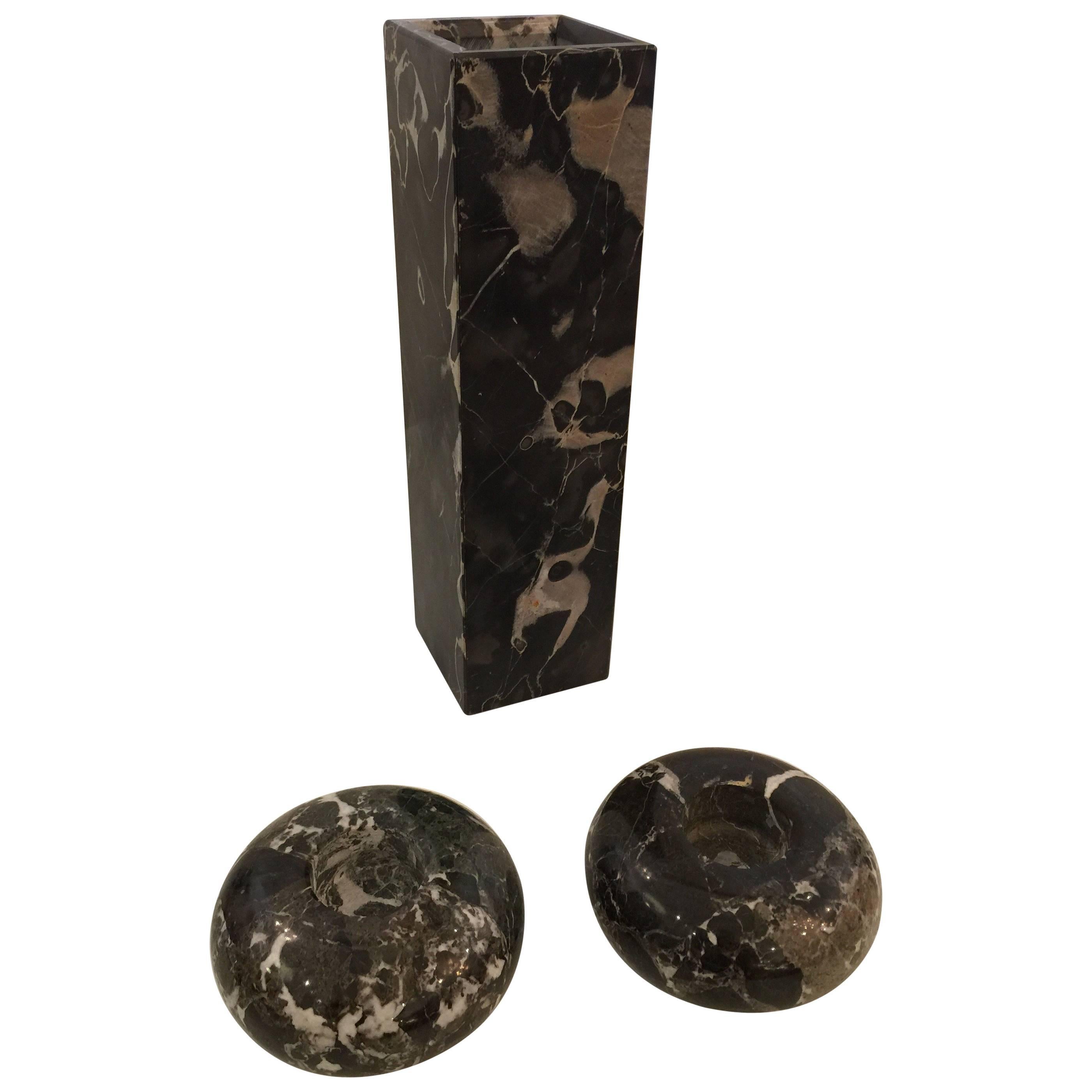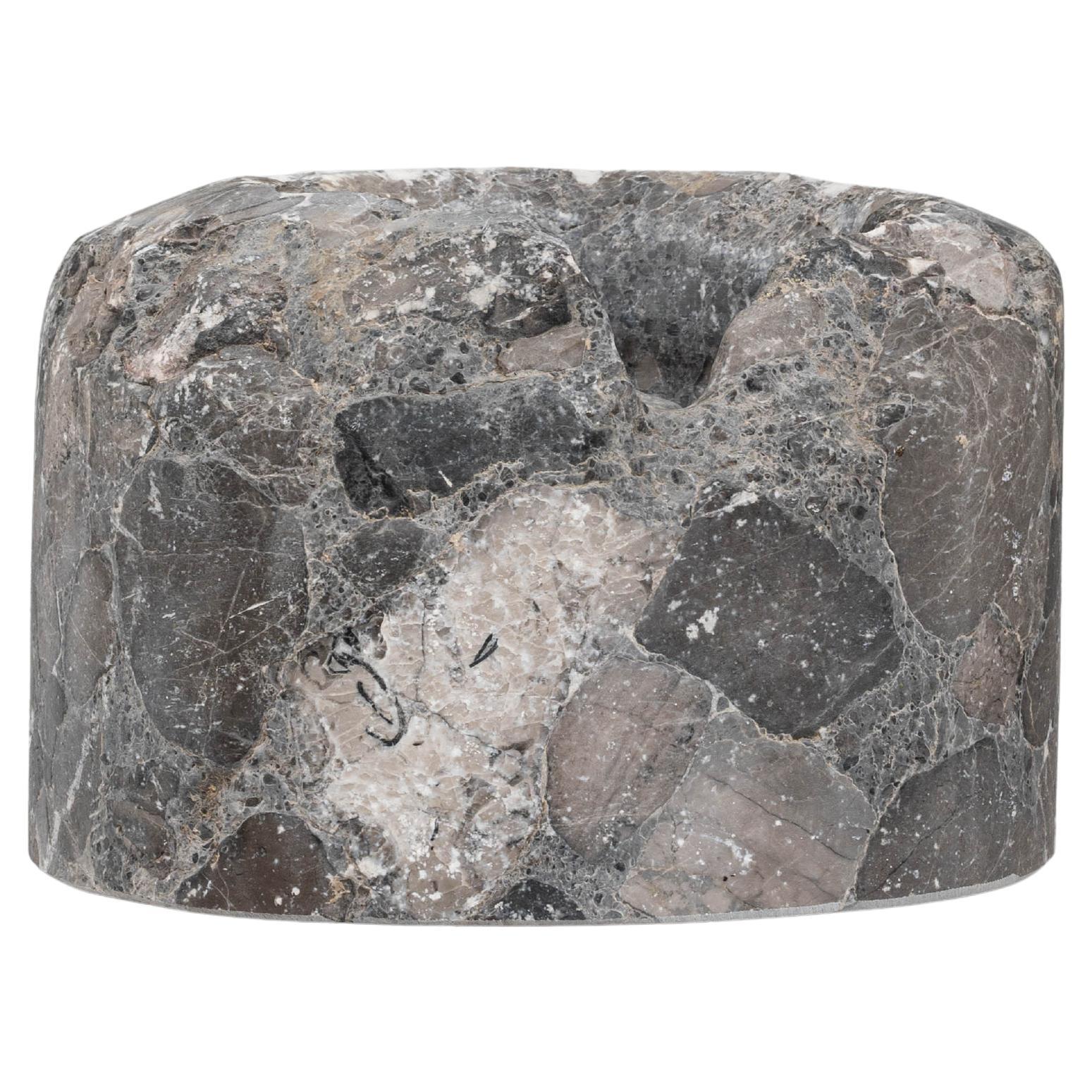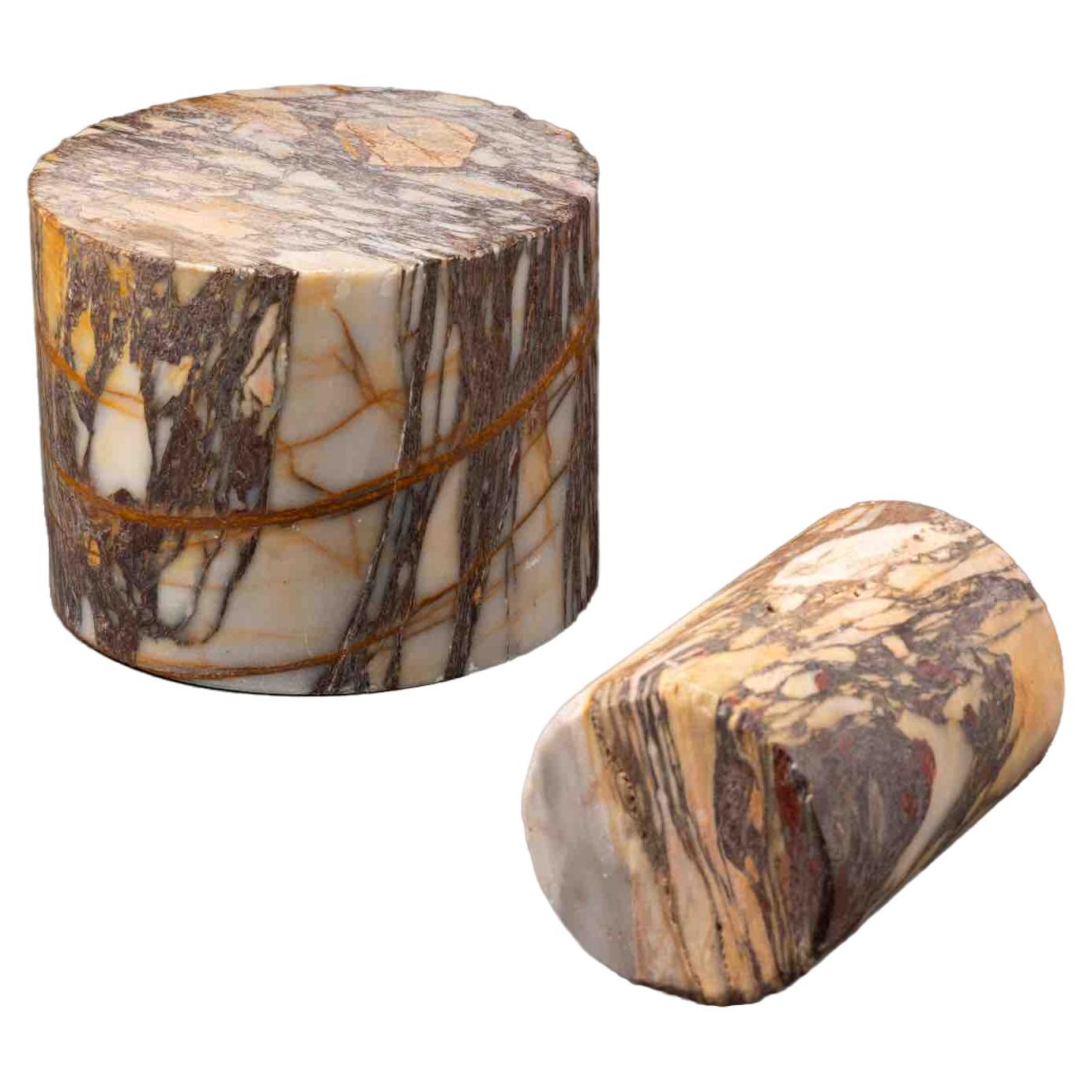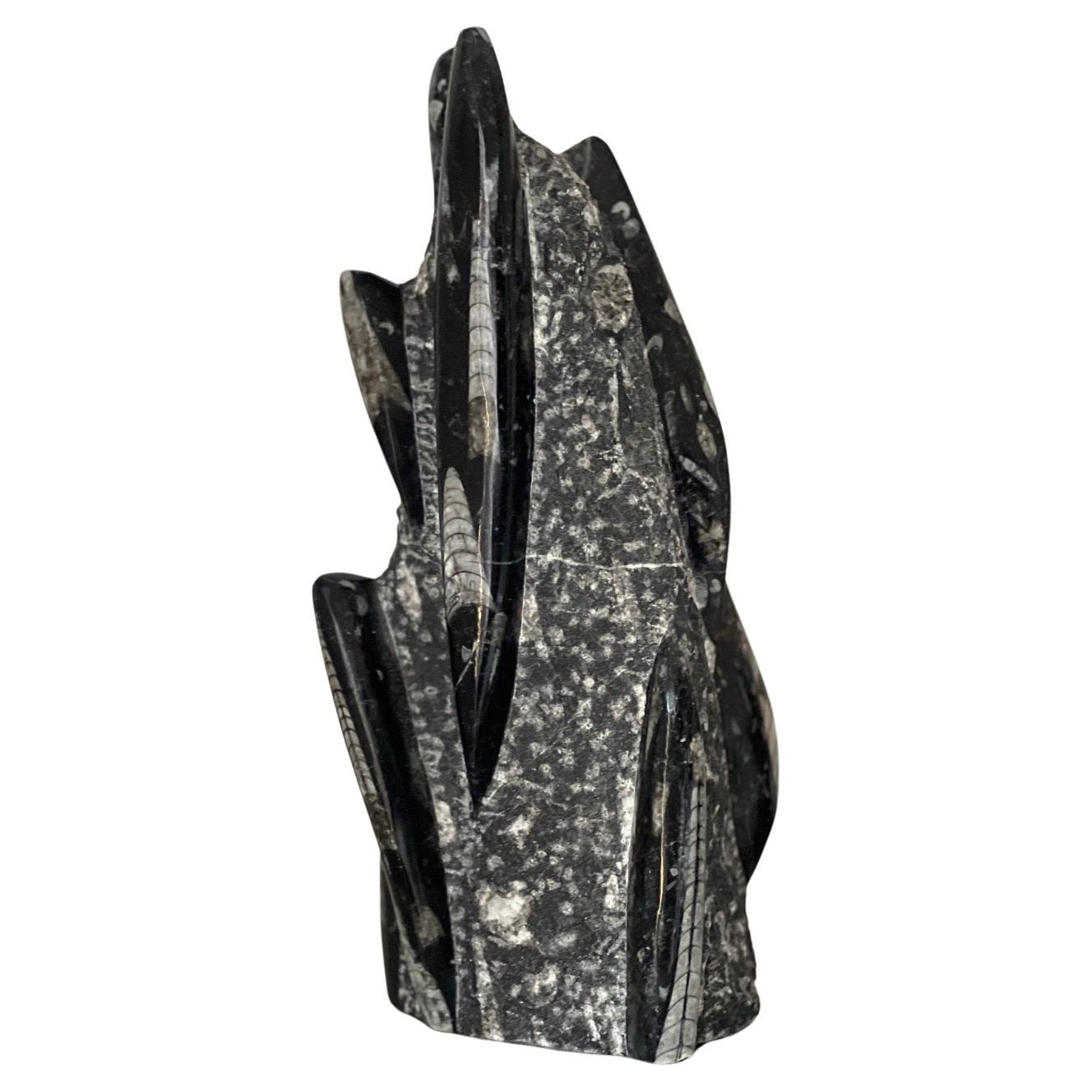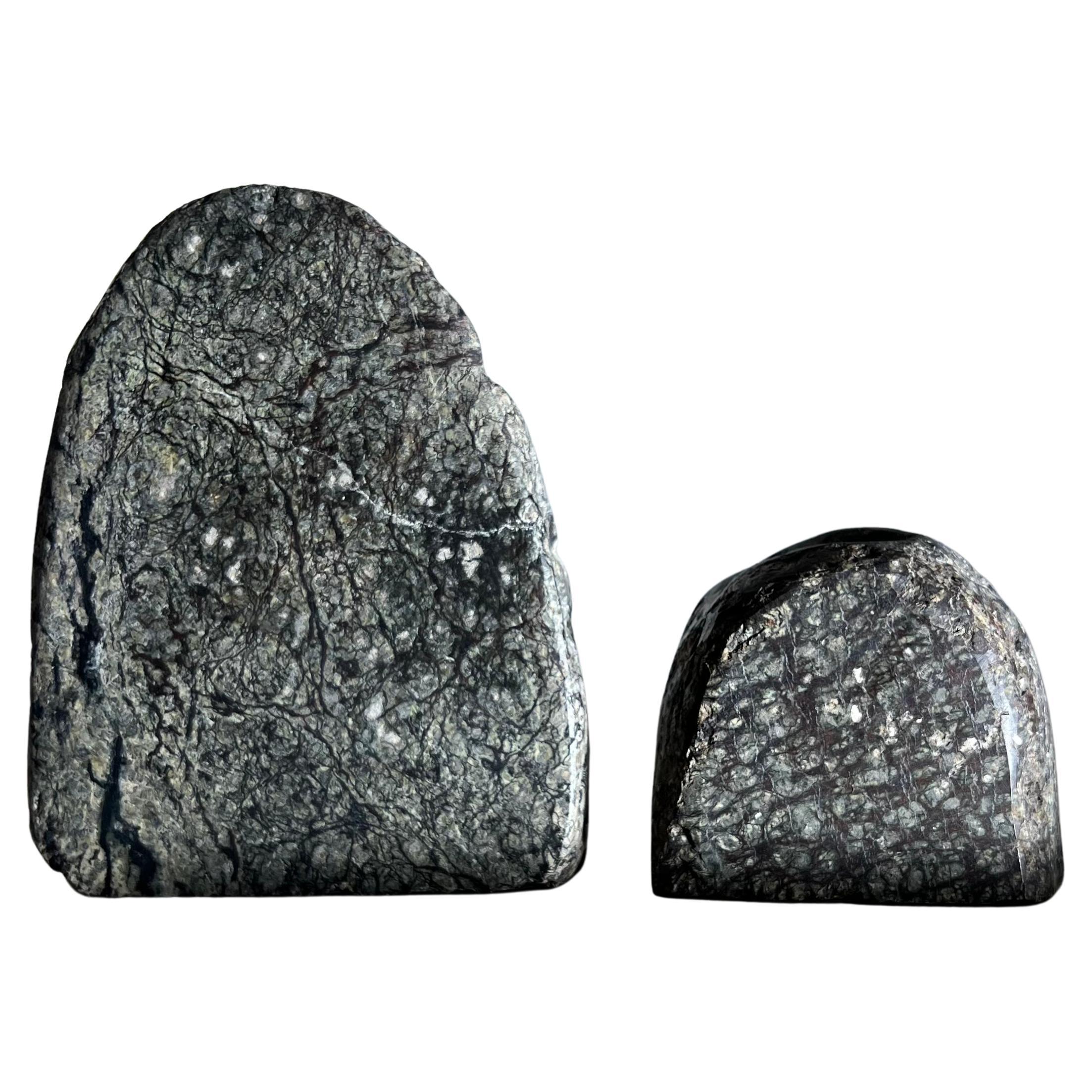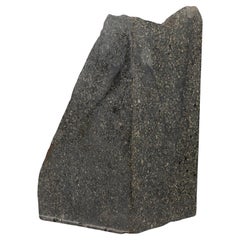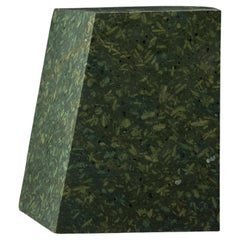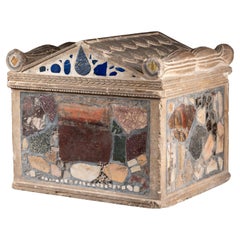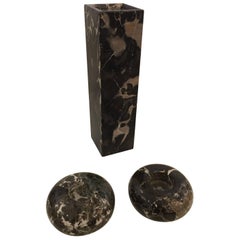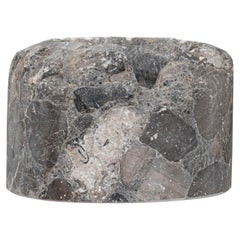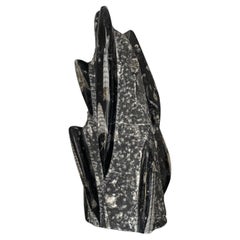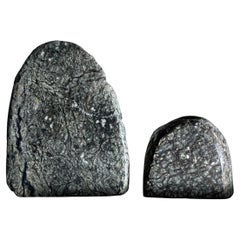Articles similaires à Two bases in rare Breccia Africano and Granito Nero
Vous voulez plus d'images ou de vidéos ?
Demander au vendeur plus d'images ou de vidéos
1 sur 5
Two bases in rare Breccia Africano and Granito Nero
1 800 €TVA incluse
À propos de cet article
Two bases in rare Breccia Africano and Granito Nero
Cylinder in Breccia Africano
H 12.5 × D 7 cm
Cylinder in Granito Nero
H 6 × D 9 cm
These two cylindrical bases made of rare marble are ideal for displaying ancient or modern objects and sculptures. Their pure shape and the beauty of the raw material also make them suitable for decorating a table or a bookshelf.
Breccia Africano, also known as Africano marble, is an exceptional and historically significant stone that was extensively used in ancient Rome. Characterized by its striking color contrasts, Africano marble consists of mottled pink, red, and green fragments set within a dark grey or black matrix. This distinctive aesthetic made it one of the most highly prized marbles of antiquity.
The quarries that supplied Africano marble were lost for centuries, leading to speculation about their origin. Faustino Corsi, in his renowned catalog of marbles, incorrectly assumed that the marble originated from the Greek island of Chios. However, the true source of Africano marble was rediscovered in 1966 by Michael Ballance. He located remnants of the stone near Kara Göl, a flooded quarry at Sigacik, the site of the ancient city of Teos in modern-day Turkey. A second quarry was identified at Beylerköy, about 15 kilometers away.
Roman stone-cutters named the marble "Africano" due to its intense color contrasts. It was among the first colored marbles introduced in Rome and saw its peak usage during the reigns of the emperors from Augustus to the Antonines. Even during the reign of Diocletian (late 3rd to early 4th century AD), Africano marble was still considered one of the most expensive marbles available. Its high value ensured that it was reserved primarily for use by emperors and other elites, and curiously, it is rarely found in Asia Minor, despite being quarried there.The Edict on Maximum Prices, issued by Emperor Diocletian in AD 301, listed Africano marble at 150 denarii per foot (approximately 29.57 cm). This made it more expensive than cipollino marble (100 denarii per foot) but less costly than marbles from Phrygia and Numidia (200 denarii per foot). The pricing reflects its esteemed status, though it remained slightly more accessible than the most luxurious marbles of the time (porphyry and serpentine).
Africano marble was extracted in large quantities and transported to Italy and North Africa, where it was used extensively during the 1st and 2nd centuries AD. It was particularly favored in Augustan architecture (late 1st century BC to early 1st century AD) and was frequently employed in Rome’s grand structures. Notably, two monumental thresholds made from Africano marble—one in the Pantheon and another in the Capitolium at Ostia—demonstrate its continued use during the Hadrianic period (early 2nd century AD), even after the quarries had been largely depleted.
Africano marble stands as a testament to the craftsmanship and aesthetic sensibilities of the ancient Romans. Its specific dark coloration and historical significance continue to captivate scholars and enthusiasts, securing its place among the most distinguished marbles of antiquity.
- Dimensions:Hauteur : 12,5 cm (4,93 po)Diamètre : 7 cm (2,76 po)
- Style:Néoclassique (De la période)
- Matériaux et techniques:
- Lieu d'origine:
- Période:
- Date de fabrication:19th century
- État:Usure conforme à l'âge et à l'utilisation.
- Adresse du vendeur:Bruxelles, BE
- Numéro de référence:1stDibs : LU6666245072202
À propos du vendeur
5,0
Vendeur professionnel agréé
Chaque vendeur répond à des normes strictes en matière d'authenticité et de fiabilité
Vendeur 1stDibs depuis 2022
15 ventes sur 1stDibs
Temps de réponse habituel : 2 heures
- ExpéditionRecherche du devis...Expédition depuis : Bruxelles, Belgique
- Politique des retours
Certaines parties de cette page ont été traduites automatiquement. 1stDibs ne garantit pas l'exactitude des traductions. L'anglais est la langue par défaut de ce site web.
Garantie d'authenticité
Bien qu'il soit peu probable que la situation se présente, dans le cas où vous rencontreriez un problème d'authenticité d'un article, contactez-nous dans un délai d'un an pour obtenir un remboursement intégral. DétailsGarantie de remboursement
Si votre article n'est pas conforme à la description, est endommagé pendant le transport ou ne vous est pas livré, contactez-nous sous 7 jours pour obtenir un remboursement intégral. DétailsAnnulation sous 24 heures
Vous disposez d'un délai de 24 heures pour annuler votre achat sans motif.Des vendeurs professionnels agréés
Nos vendeurs de renommée mondiale doivent respecter des normes strictes en matière de service et de qualité, afin de préserver l'intégrité de nos fiches produit.Garantie d'alignement des prix
Si vous constatez qu'un autre vendeur a mis en vente le même article à un prix inférieur sur un autre site, nous nous alignerons sur ce prix.Livraison en toute confiance à l'international
Notre réseau de transporteurs de premier ordre propose des options d'expédition spécialisées dans le monde entier, y compris des livraisons personnalisées.Plus d'articles de ce vendeur
Tout afficherGrand spécimen de porphyre noir impérial
Rare et grand fragment architectural en porphyre noir impérial
partiellement poli,
23,5 x 15 x 12 cm
Le Nero est une rare variété noire de porphyre impérial provenant du djebel Do...
Catégorie
Antiquités, 15e siècle et avant, italien, Romain classique, Spécimens na...
Matériaux
Porphyre
Deux spécimens cylindriques de marbre de couleur
Deux spécimens cylindriques en Breccia Skyros Marble ou Settebassi
Ces deux spécimens cylindriques sont parfaits pour servir de serre-livres ou pour présenter des œuvres d'art.
Le ...
Catégorie
Antiquités, Fin du XIXe siècle, italien, Romain classique, Serre-livres
Matériaux
Marbre de Brescia
2 080 € Prix de vente / ensemble
20 % de remise
Élégante base en porfido Serpentino Antico
Elegant fragment en porfido Serpentino Antico
19,5 x 18 x 12 cm
Ce magnifique fragment peut être utilisé comme socle en marbre rare, idéal pour présenter des objets et des sculpture...
Catégorie
Antiquités, 15e siècle et avant, italien, Romain classique, Spécimens na...
Matériaux
Marbre
Cinerarium du Grand Tour - 18e siècle
Cinerarium du Grand Tour du 18e siècle
Pierre calcaire, incrustée de fragments de marbre romain et de fresques
Annotation du point de repérage inscrit de manière indistincte sur les ...
Catégorie
Antiquités, XVIIIe siècle, italien, Grand Tour, Urnes
Matériaux
Calcaire, Marbre
Deux rares figures en costume turc - Venise, début du XVIIe siècle
Rares bronzes représentant deux personnages en tenue turque
Probablement Soliman le Magnifique à deux âges différents
bronzes, bases en albâtre
Venise, début du XVIIe siècle
19,5 x 6...
Catégorie
Antiquités, 17ème siècle, italien, Renaissance, Sculptures - Figuratif
Matériaux
Albâtre, Bronze
22 000 € / ensemble
Table en bois et marbre noir du 17ème siècle - Nord de l'Italie
Table en noyer et marbre
Nord de l'Italie, XVIIe siècle
Bois et marbre noir
H 80,5 x L 114 x P 58 cm
Cette élégante table présente un seul plateau en marbre massif directement mon...
Catégorie
Antiquités, 17ème siècle, italien, Baroque, Tables d'appoint
Matériaux
Marbre
Suggestions
Vase et bougeoirs en marbre Nero Marquina
Par Angelo Mangiarotti
Cet ensemble de trois objets en marbre italien Nero Marquita est dans le style de Sergio Asti ou Mangiarotti. Magnifiques et d'un design simple, ces formes géométriques en riche marb...
Catégorie
Vintage, années 1960, italien, Vases
Matériaux
Marbre
1 922 € / ensemble
19th Century European Marble Mortar
This 19th Century European marble mortar is a commanding and visually rich example of utilitarian craftsmanship. Carved from a unique conglomerate marble, the surface showcases an in...
Catégorie
Antiquités, XIXe siècle, Européen, Sculptures - Figuratif
Matériaux
Marbre
Sculpture sculpturale décorative vintage en pierre fossile, sculpure, orthodoxe marocain
Formes fluides - Art décoratif organique - Sculpture fossile marocaine
Il s'agit d'une annonce pour un spécimen de tour d'orthocère autoportante provenant du site de la Montagnes ...
Catégorie
Vintage, années 1970, italien, Mid-Century Modern, Spécimens naturels
Matériaux
Calcaire
624 € Prix de vente
20 % de remise
Bougeoirs vintage en pierre véritable, 1970
Paire de candélabres en bouldercore, années 1970. Tons de basalte, de mousse et d'aubergine. Véritable pierre - lourde. Bases feutrées. Possibilité d'enlèvement à Los Angeles ou de l...
Catégorie
Fin du 20e siècle, Brutalisme, Bougeoirs
Matériaux
Pierre
335 € Prix de vente / ensemble
20 % de remise
Paire de colonnes italiennes en marbre de Breccia
Paire de colonnes italiennes en marbre Breccia. Début du 20e siècle.
36.24" h x 14" w x 14" d
Catégorie
Début du 20ème siècle, italien, Éléments architecturaux
Matériaux
Marbre, Marbre de Brescia
10 836 € / ensemble
SUITE DE TROIS POIDS DE PAPIER ITALIEN En marbre noir veiné 20ème siècle
SUITE DE TROIS POIDS DE PAPIER ITALIEN En marbre noir veiné 20ème siècle
En marbre noir veiné, l'un est carré, l'autre conique et le dernier pyramidal.
Dimensions du cône : h. 15cm
b...
Catégorie
20ième siècle, italien, Moderne, Serre-livres
Matériaux
Marbre
960 € Prix de vente / ensemble
20 % de remise
